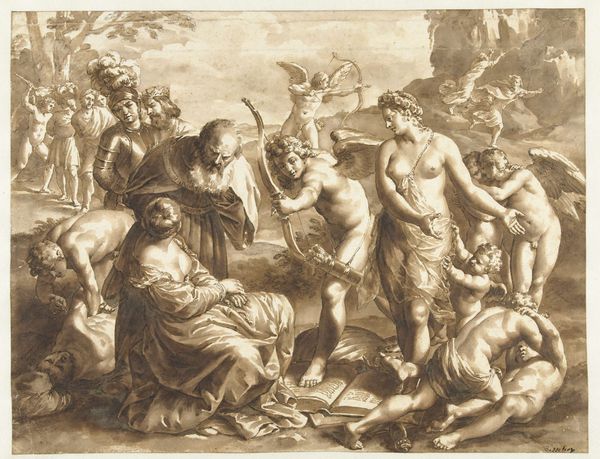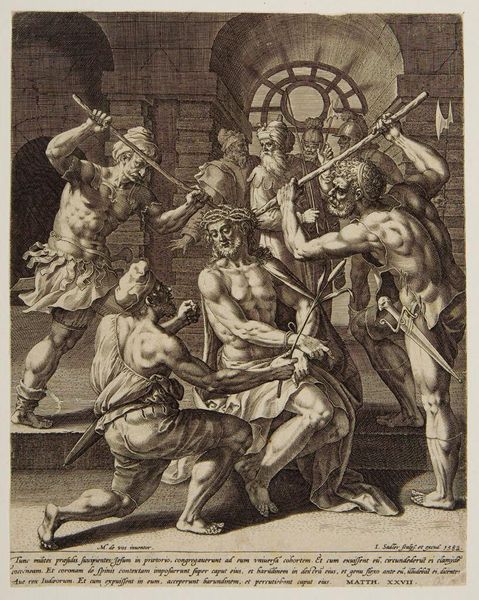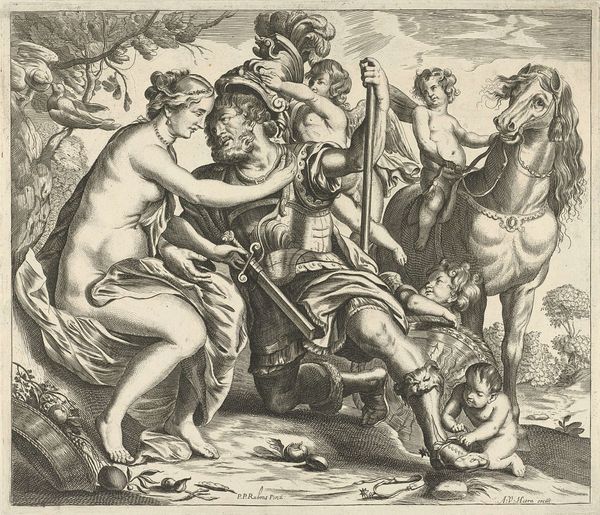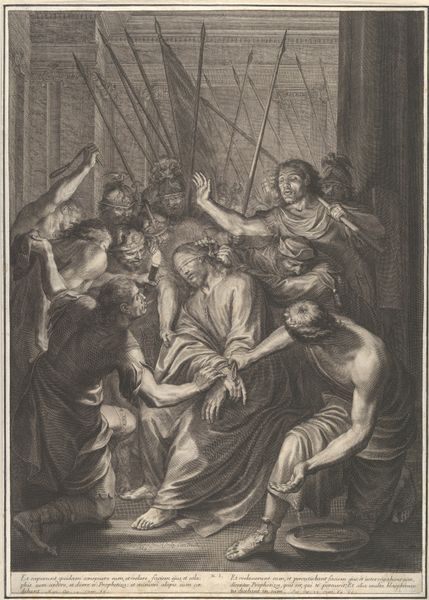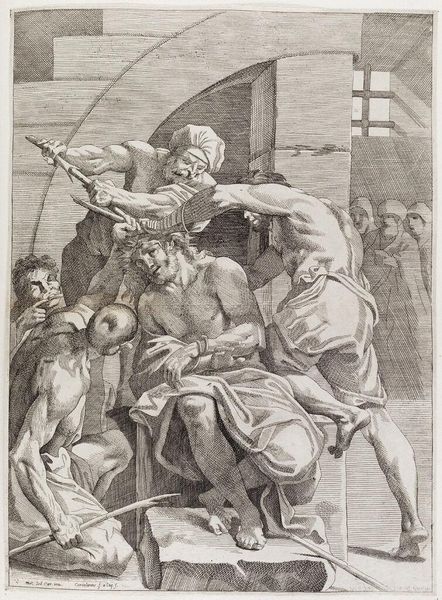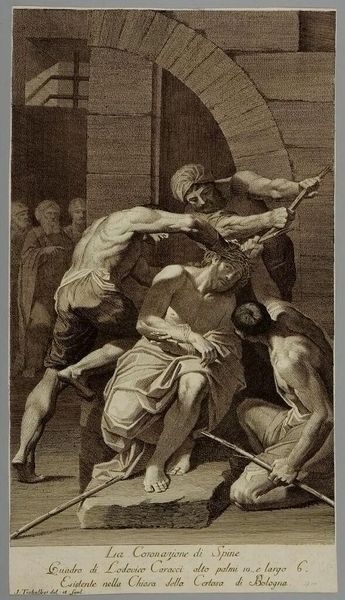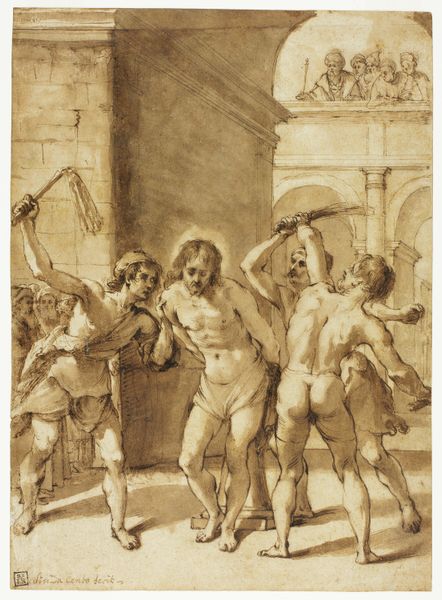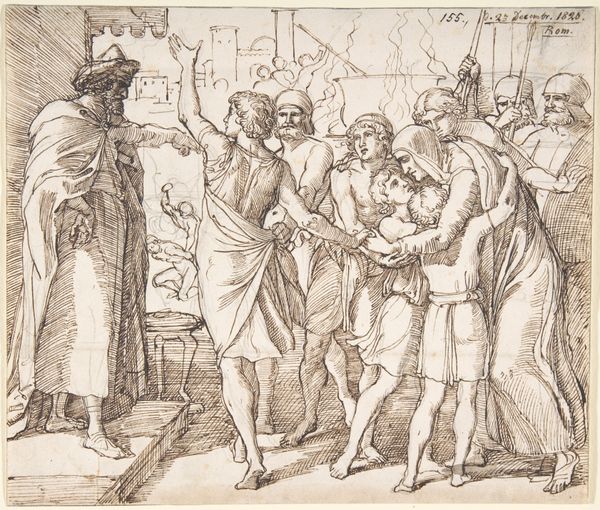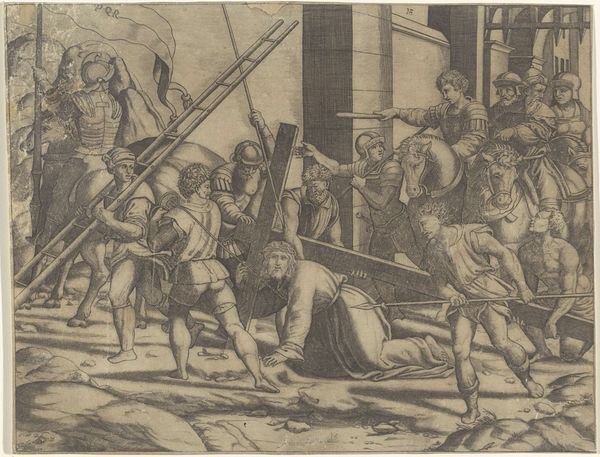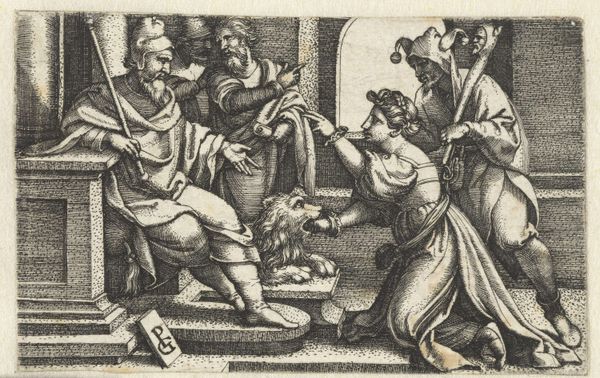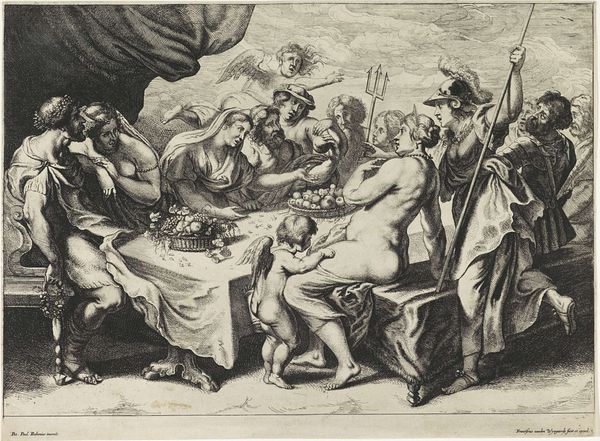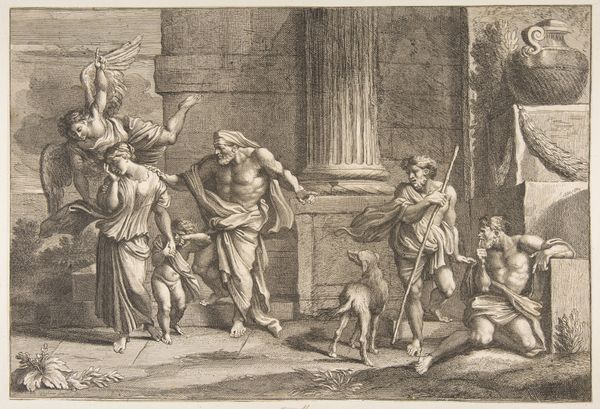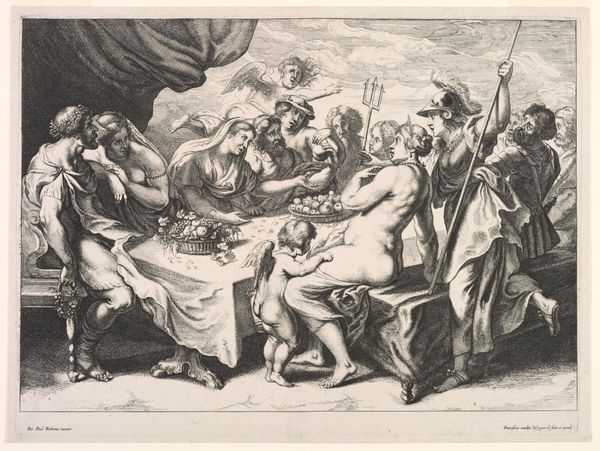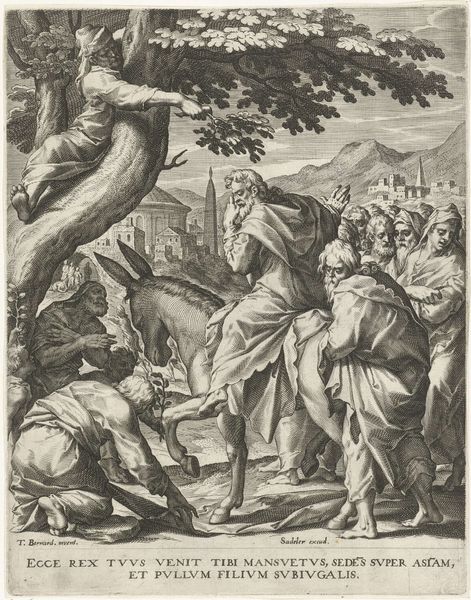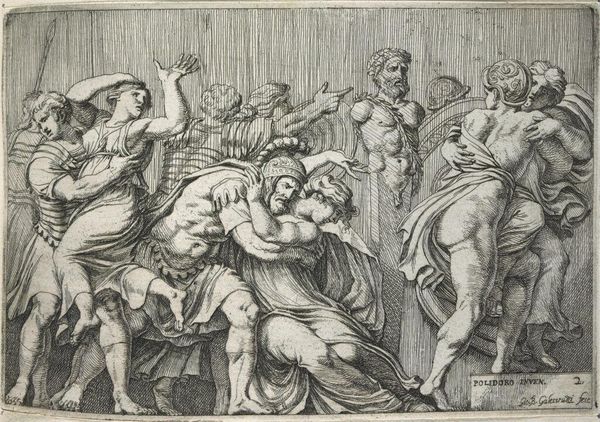
painting, oil-paint
#
allegory
#
narrative-art
#
baroque
#
painting
#
oil-paint
#
figuration
#
oil painting
#
mythology
#
history-painting
Dimensions: 253 x 267 cm
Copyright: Public domain
Editor: This is Guercino's "Hersilia Separating Romulus and Tatius," an oil painting from 1645. It depicts a chaotic scene with warriors clashing, but my eye is drawn to Hersilia, positioned between them. There's a palpable sense of tension. What can you tell me about this work? Curator: The drama! Guercino has captured a pivotal moment of peace making within the origin myth of Rome. Hersilia, daughter of one and wife of the other, steps between Romulus, founder of Rome, and Tatius, king of the Sabines, to stop their battle after the Sabine women were abducted. Editor: So, this painting portrays more than just a simple historical moment? Curator: Precisely. Consider this through a feminist lens. Hersilia, positioned as the peace-maker, actively intervenes in a conflict initiated and perpetuated by men. Where do you think Guercino positions Hersilia, physically and metaphorically, in the composition? Editor: She definitely occupies a central role; the fighters surround her. The color of her robes makes her stand out. But wasn't this peace also achieved by violence? Curator: That's the historical and ethical tightrope Guercino walks. Is peace truly possible when born from violence and appropriation? What does Hersilia’s plea for reconciliation say about the constraints placed on women to restore harmony in patriarchal structures? Editor: I see it now. It’s not just a historical painting, it's a statement on the roles women are expected to play even as history is written about them! It seems the image of Hersilia has turned into an allegory for the restoration of justice and peace, one born from constraint. Curator: Exactly! The painting invites a critical engagement with the power dynamics inherent in conflict resolution, prompting us to consider the roles and agency of women, in peace making and in the creation of states. Thank you for such a vital discussion. Editor: Thank you; I never thought to see it from that angle!
Comments
No comments
Be the first to comment and join the conversation on the ultimate creative platform.
